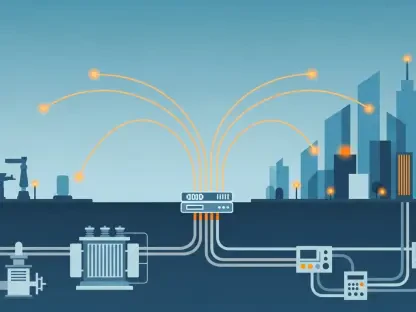In a groundbreaking move that’s sending shockwaves through the automotive industry, General Motors (GM), a titan among American automakers, has announced a sweeping directive to eliminate all Chinese-sourced parts from its supply chain by 2027. This isn’t merely a strategic adjustment but a colossal transformation that could redefine global manufacturing dynamics for vehicles. With thousands of suppliers under pressure to comply, the decision is fueled by a complex mix of geopolitical tensions, trade disputes, and an urgent need to fortify supply chain resilience. It’s a bold gamble in an era where dependency on a single region for critical components has proven risky, as seen during global crises like the COVID-19 pandemic. As GM sets its sights on a future less tethered to Chinese manufacturing, the ripple effects could reshape not only its own operations but also the broader landscape of automotive production. What drives this monumental shift, and what challenges lie ahead in this ambitious journey?
Navigating Geopolitical Storms and Trade Barriers
The catalyst behind GM’s drastic supply chain overhaul lies in the escalating friction between the U.S. and China, a rivalry that has profoundly impacted global trade. Tariffs imposed on Chinese imports, alongside stringent export controls, have significantly driven up costs for companies like GM that have long relied on parts sourced from China. These financial burdens are compounded by the stark lessons of recent years, where disruptions—most notably during the COVID-19 crisis—revealed the fragility of over-dependence on a single geographic hub. By severing ties with Chinese sourcing, GM aims to shield itself from the unpredictability of future trade conflicts or sudden policy shifts that could halt supply lines. This move is less about immediate cost-cutting and more about safeguarding long-term operational stability in an increasingly volatile global environment, positioning the company to weather political and economic storms with greater agility.
Beyond the immediate pressures of tariffs and trade wars, GM’s decision reflects a broader recognition of systemic vulnerabilities in global supply networks. The automotive industry, with its intricate web of suppliers spanning continents, is particularly susceptible to bottlenecks when a key region faces upheaval. Historical disruptions have shown how a single point of failure—whether due to natural disasters, political unrest, or pandemics—can bring production to a grinding halt. For GM, exiting Chinese sourcing isn’t just a reaction to current tensions but a proactive step to mitigate risks that could emerge unexpectedly over the coming years. The focus is on creating a buffer against the kind of cascading failures that have previously left automakers scrambling for parts, ensuring that production lines keep running even when global conditions turn turbulent. This strategic foresight underscores a shift in priorities from cost efficiency to enduring security.
Building a Fortress of Regional Strength
Rather than merely escaping risks, GM is strategically pivoting toward a more fortified supply chain by emphasizing regional proximity. The company is actively encouraging its vast network of suppliers to relocate operations to areas closer to key markets, with a particular focus on North America, alongside emerging hubs like Mexico, India, Vietnam, and Thailand. These regions offer a dual advantage: reduced exposure to geopolitical flare-ups that often characterize U.S.-China relations, and labor and production costs that remain competitive. By prioritizing regional sourcing, especially for vehicles built in North America, GM seeks to create a supply ecosystem that’s inherently more robust, capable of withstanding global disruptions with minimal impact. This reorientation is a deliberate effort to anchor operations in environments where stability and alignment with U.S. interests are more assured.
This push for regional resilience also aligns with a growing industry imperative to shorten supply lines, reducing the time and risk associated with long-distance logistics. GM’s strategy involves not just a geographic shift but a rethinking of how supply chains are structured, aiming for tighter integration between production centers and suppliers. By fostering closer ties with manufacturers in allied or neighboring regions, the company can respond more swiftly to market demands and unforeseen challenges, whether they stem from policy changes or supply shortages. Additionally, this approach promises to cut down on the carbon footprint tied to transcontinental shipping, an ancillary benefit in an era where sustainability is increasingly under scrutiny. While the transition to these new locales presents logistical hurdles, GM’s vision is clear: a supply chain that’s not only safer from external shocks but also more nimble and environmentally conscious in its operations.
Confronting Supplier Challenges and Financial Burdens
The road to a China-free supply chain is fraught with obstacles, particularly for GM’s extensive network of suppliers, many of whom have deep-rooted dependencies on Chinese manufacturers. Rewiring these connections is a monumental task, requiring the establishment of new production bases in alternative regions—a process that could entail billions in investment. The potential for production delays looms large as suppliers grapple with the logistics of such a massive shift, and these disruptions could translate into higher vehicle prices for consumers in the near term. GM has signaled its intent to support compliant suppliers through initiatives like joint ventures in targeted regions, but the underlying ultimatum is unmistakable: adapt to the new mandate or risk losing critical contracts. This high-stakes scenario places immense pressure on suppliers to align with GM’s vision despite the daunting upfront costs.
Compounding the financial strain is the sheer complexity of reconfiguring global supply networks within a tight timeline. Suppliers must not only identify and establish partnerships in new regions but also ensure that quality and efficiency standards remain uncompromised during the transition. The risk of short-term supply shortages is real, particularly for components that have historically been dominated by Chinese production, potentially slowing down assembly lines at GM plants. Moreover, the economic ripple effects could extend to smaller suppliers who lack the capital to pivot quickly, creating a bottleneck in the broader ecosystem. While GM’s support mechanisms aim to ease some of these burdens, the scale of the challenge underscores the delicate balance between achieving long-term resilience and managing immediate operational fallout. The coming years will test the resolve of both GM and its partners as they navigate this intricate and costly transformation.
Unpacking Strategic Drivers and Broader Consequences
At a deeper level, GM’s mandate is underpinned by strategic imperatives that go beyond mere economics, touching on critical issues like intellectual property protection and national security. Persistent concerns about theft of proprietary technology and industrial espionage in China have fueled distrust among U.S. corporations, prompting GM to seek safer harbors for its innovations. This decision also mirrors a larger trend of economic decoupling between the U.S. and China, a trajectory that could provoke retaliatory measures from Beijing, further complicating global trade dynamics. While the overarching aim is to secure a more predictable and protected supply chain, the immediate hurdles—ranging from logistical snarls to inflated transition costs—pose significant risks. GM views this as a necessary step to future-proof its operations against an unpredictable geopolitical landscape.
The implications of this shift extend far beyond GM’s corporate boundaries, hinting at a potential reconfiguration of international economic relationships. As one of the largest players in the automotive sector, GM’s actions could signal to other U.S. companies the viability of reducing reliance on Chinese manufacturing, even at substantial cost. However, this path is not without pitfalls; the upfront expenses and operational disruptions could strain relationships with stakeholders and impact market competitiveness in the short term. Additionally, the possibility of reciprocal trade barriers from China looms as a counterweight to the anticipated benefits of diversification. GM’s calculated risk reflects a broader calculus of balancing immediate sacrifices against the promise of long-term autonomy and security, a gamble that will likely influence corporate strategies across industries facing similar geopolitical pressures.
Setting the Stage for Industry-Wide Transformation
GM’s bold directive is poised to create waves that could reverberate across the entire automotive industry, potentially inspiring competitors to follow suit. If major players like Ford or Stellantis adopt comparable policies, the collective retreat from Chinese sourcing might fundamentally alter global trade patterns, diminishing China’s longstanding dominance in automotive parts production. Such a shift could spur manufacturing growth and job creation in the U.S. and allied nations, fostering economic benefits in these regions. However, the trade-off may come in the form of elevated consumer prices as production costs rise during the transition. The industry stands at a crossroads where the pursuit of supply chain security could redefine economic priorities for years to come, reshaping how and where vehicles are built.
A particularly thorny aspect of this transition lies in the realm of electric vehicle (EV) components, an area where Chinese supply chains hold significant sway, especially for batteries and rare earth materials. Navigating this dependency adds a layer of complexity to GM’s plans, as alternative sources for these critical inputs are not yet fully scaled or cost-competitive. The urgency to diversify sourcing for EV parts underscores the broader challenges of aligning technological innovation with geopolitical strategy. As the automotive sector pivots toward electrification, GM’s ability to secure reliable, non-Chinese supply lines for these components will be pivotal. This facet of the mandate highlights the intricate interplay between industry trends and global politics, setting a precedent that could either accelerate or hinder the broader adoption of sustainable automotive technologies depending on execution.
Reflecting on a Pivotal Industry Shift
Looking back, GM’s decision to mandate a complete exit from Chinese sourcing by 2027 stood as a defining moment in the automotive industry’s evolution. It marked a courageous, if challenging, response to the geopolitical tensions and trade frictions that had long strained global supply chains. The initiative underscored a critical pivot toward resilience, driven by the need to protect against disruptions and safeguard strategic interests. While the journey was fraught with logistical complexities and significant costs, it illuminated a path for others to reconsider their own dependencies. Moving forward, the focus for GM and its peers should center on fostering robust partnerships with suppliers in alternative regions, leveraging technology to enhance supply chain transparency, and investing in scalable solutions for critical components like EV batteries. This historic shift offered a blueprint for balancing commerce with security, urging the industry to prioritize adaptability in an ever-changing global landscape.









